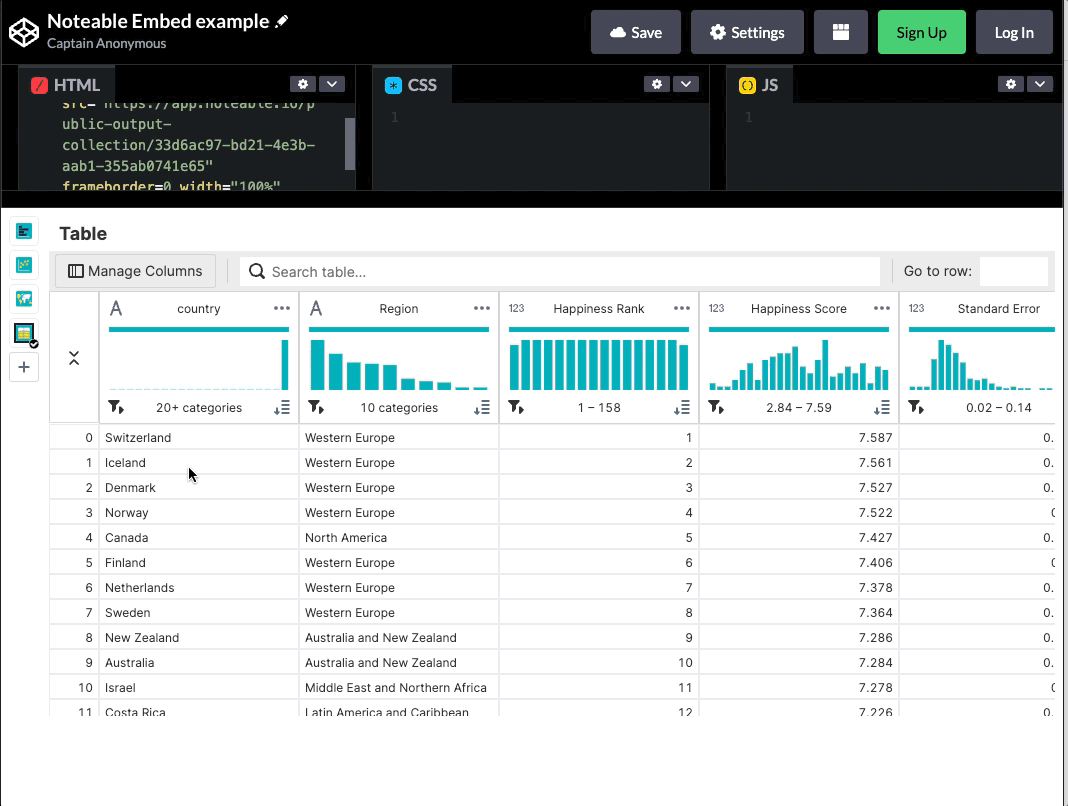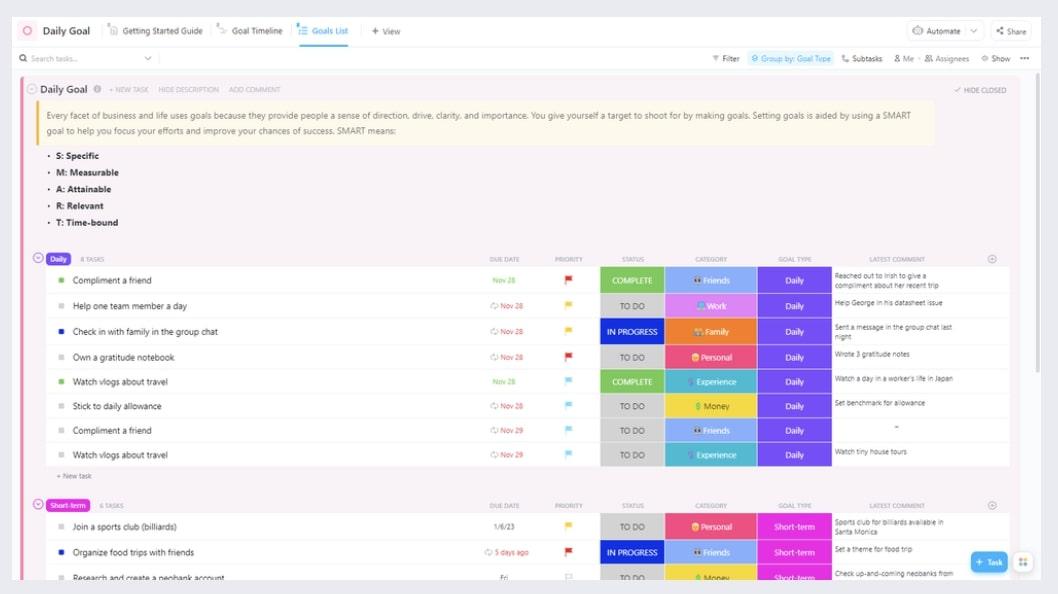Many machine learning practitioners swear by Google Colab’s ability to solve storage problems and financial constraints. Hosted by Jupyter Notebook, Colab is also popular as it does not require any setup.
However, we understand that its limited space, lack of live editing functionality, and time-consuming tasks tempt you to look for alternatives.
We will discuss the best Google Colab alternatives to help you with your data science lifecycle, including data mining, modeling, processing, and day-to-day tasks.
⏰ 60 Second Summary
Looking for a Google Colab alternative? Here are 10 platforms to explore for AI and machine learning projects:
- Noteable – A collaborative notebook platform for seamless teamwork on data projects.
- Jupyter – An open-source tool for live code, visualizations, and documentation.
- Microsoft Visual Studio – A powerful development environment with AI-friendly tools.
- Kaggle – Offers free Jupyter notebooks with GPU access and a vast dataset library.
- Databricks – Built on Apache Spark, perfect for large-scale data science and engineering.
- Paperspace – High-performance cloud computing with pre-configured AI environments.
- Amazon SageMaker – A fully managed service for building, training, and deploying ML models.
- CoCalc – An online workspace supporting Jupyter notebooks and LaTeX for computations.
- Deepnote – A team-friendly data science notebook with real-time collaboration.
- Replit – A cloud-based IDE for fast prototyping and sharing across multiple languages.
ClickUp keeps your AI projects organized—track experiments in Dashboards, document insights in Docs, and manage tasks seamlessly.
What Should You Look for in Google Colab Alternatives?
For better decision-making, we’ll take you through crucial factors responsible for the general use cases of notebooks for individuals, data savvy business teams, educators, and researchers.
- Real-time collaboration: Choose a platform that offers a collaborative environment like screen-sharing
- Manageable environment: Look for a platform that makes the conda environment work on your computer simple
- Coding embeds: Make sure the alternatives to Google Colab allow you to create and embed code blocks in a single place
- Data visualization: Look for easy no-code options that are getting more attention from data experts when it comes to exploring data while building data apps
The 10 Best Google Colab Alternatives to Use in 2024
Here’s a list of the 10 best alternatives to Google Colab based on their best features, limitations, pricing, and ratings.
1. Noteable

Noteable.io is a web-based cloud computing platform, a notebook known for its rich collaboration environment built on Jupyter protocols.
Noteable.io is an open-source ‘no-coding needed’ platform that supports Python, SQL, and R. The platform offers a collaborative environment by allowing internal and external data warehouses like Google BigQuery, Snowflake, Databricks, and APIs.
Notable.io best features
- You can code, visualize data, and share insights within a collaborative setting as Notable seamlessly works with Jupyter Notebooks
- Get to work with multiple users and facilitate teamwork with real-time collaboration features
- Access and work on projects from any device with internet connectivity is easy
Notable.io limitations
- Restrictions on storage space become a constraint when dealing with large datasets or multiple projects
- A stable internet connection is necessary, limiting accessibility in areas with poor connectivity
Noteable.io pricing
- Starter: Free
- Pro: $30/month
- Enterprise: Custom pricing
Noteable.io ratings and reviews
- G2: 4.5/5 (500+ reviews)
- Capterra: Not enough reviews
2. Jupyter

Jupyter is an open-source web application that allows you to create and share live code, equations, visualizations, and narrative text documents.
It’s a versatile tool popular among data scientists, researchers, educators, and analysts to develop and present their work in an interactive and reproducible manner.
Jupyter best features
- The interface allows you to execute and write code seamlessly with a user-friendly notebook interface that supports multiple programming languages like Python, R, and Julia
- The interactive output lets you visualize data instantly to display visualizations, graphs, and plots within the notebook
- Collaborate better with easy sharing of documents through email, Dropbox, GitHub, and other platforms
- The Kernel flexibility allows you to work with different programming languages within a single notebook
- Enjoy many functionalities for data manipulation, analysis, and visualization with integrated libraries like NumPy, Pandas, Matplotlib
Jupyter limitations
- Some machine learners find the initial learning phase challenging
- Working with large datasets or complex computations affects performance on less powerful machines
- Cumbersome version control while sharing notebooks, leading to potential conflicts when collaborating on the same document
Jupyter pricing
- Free
Jupyter ratings and reviews
- G2: 4.6/5 (200+ reviews)
- Capterra: 4.8/5 (70+ reviews)
3. Microsoft Visual Studio

Microsoft Visual Studio is an integrated development environment (IDE) that offers various programming languages like C# (C-Sharp), Python, Javascript, C++, and Visual Basic .NET.
A notable feature of Microsoft Visual Studio is the Visual Studio Notebooks, which offers a virtual lab with access to data exploration, analysis, and collaborating tools.
Microsoft Visual Studio best features
- The multi-language features let you utilize various programming languages like Python, R, and F
- With the IDE (Integrated Development Environment), you can access Notebooks alongside other code projects
- Combine code, visualizations, and narrative text, making effective data storytelling and analysis in an interactive environment
Microsoft Visual Studio limitations
- Visual Studio Notebooks are integrated within the Visual Studio ecosystem, limiting those who prefer a standalone or cross-platform notebook environment
- Beginners or those unfamiliar with Visual Studio face a steep learning curve due to the extensive features and the ecosystem’s complexity
Microsoft Visual Studio Pricing
For individuals and small teams
- Individual: Free access
For businesses and enterprises
- Professional subscription: $45/month per user
- Enterprise subscription: $250/month per user
Microsoft Visual Studio ratings and reviews
- G2: 4.6/5 (200+ reviews)
- Capterra: 4.8/5 (70+ reviews)
4. Kaggle

Kaggle is renowned for hosting data science competitions while offering a collaborative environment for data enthusiasts, researchers, and professionals.
Kaggle also serves as an educational hub, offering tutorials, courses, and kernels to facilitate learning and skill development in data science.
For beginners, Kaggle helps sharpen analytical skills, apply data science tasks and techniques to real datasets, and collaborate with a global community of data practitioners.
Kaggle best features
- Explore and work with diverse data with access to multiple datasets across various domains
- Solve real-world problems and compete for rewards with various data science competitions
- Create and share code in a collaborative environment through kernels, facilitating learning
- Join the real-time community to collaborate, share insights, and learn from one another’s projects
Kaggle limitations
- Some specialized fields have fewer resources or competitions available
- Other functionalities receive less attention As the platform heavily focuses on competition
Kaggle pricing
- Free
- Kaggle Notebooks: Custom pricing
Kaggle ratings and reviews
- G2: 4.7/5 (30+ reviews)
- Capterra: Not listed
5. Databricks

Databricks is the world’s first lakehouse platform in the cloud, combining the various warehouses, databases, and data lakes to offer an open and unified platform for data and AI.
The platform supports Python, R, Scala, and SQL with co-authoring, automatic versioning, Git integrations, and RBAC.
The data lake house architecture supports all data types, making it accessible for teams to collaborate on all the data they need to keep innovating and improving.
Databricks best features
- Automate tasks in your notebooks and schedule code executions, allowing analysis to run smoothly while you focus on your exploration and insights
- You can collaborate in real-time to edit a notebook with multiple users simultaneously to share insights and solve problems together
- The self-hosting feature helps customize it to fit your needs, install libraries, and manage resources
- Code, visualize data, and share insights within a collaborative setting as Databricks seamlessly works with Jupyter Notebooks
Databricks limitations
- Insufficient tools make it challenging for data scientists and analysts to interpret the data accurately
- New updates often disrupt ongoing work or require adjustments, impacting workflow consistency
Databricks pricing
- Usage-based pricing model with 14-day free trial
- Jobs: $0.07/user
- Delta Live Tables: $0.20/user
- Databricks SQL: $0.22/user
- Customized Workload Plan: $0.40/user
- Serverless Real-time Interference: $0.07/user
- Databricks Platform & Add-on: Custom pricing
Databricks ratings and reviews
- G2: 4.5/5 (200+ reviews)
- Capterra: 4.5/5 (20+ reviews)
6. Paperspace

Paperspace is a cloud-based platform that simplifies machine learning (ML) workflows and assists in developing, training, and deploying AI models.
It’s noted for its built-in tools that support every stage of the machine learning process, from preparing data to training deep learning models, collaborating on projects, and deploying models for use.
Paperspace best features
- Track changes in machine-learning models and datasets with their built-in version control features
- Get powerfully built security protocols and measures to safeguard sensitive data and models, securing compliance with data protection standards
- Enjoy better-integrated data science workflows with API integrations
- Scale resources up or down as per your requirement
Paperspace limitations
- Paperspace has capped 100GB/user on storage, which is restrictive when handling large datasets or deep learning models
- A longer response time or limited support options for technical queries
- You have to claim a spot on a waiting list to claim an NVIDIA H100 GPU
Paperspace pricing
- Free
- Pro: $8/month
- Growth: $39/month
- Enterprise: Custom Pricing
Paperspace ratings and reviews
- G2: Not enough reviews
- Capterra: 3.4/5 (20+ reviews)
7. Amazon SageMaker

Amazon AWS SageMaker is a machine learning (ML) platform offered by Amazon Web Services (AWS) that simplifies the process of building, training, and deploying ML projects at scale.
It’s known to offer AI algorithms that you can integrate into your applications easily.
Amazon SageMaker best features
- The storage compatibility aspect lets you store datasets in a large storage space (S3)
- Its computation abilities let you run multiple datasets simultaneously
- Get end-to-end machine and deep learning model development
Amazon SageMaker limitations
- Limited customization in terms of specifications like CPU/GPU types or memory allocation
- While SageMaker offers a wide array of built-in algorithms, integrating specialized algorithms is not supported
Amazon SageMaker pricing
- Free Tier: First two months
- On-Demand Plan: Custom pricing
- Saving Plan: Custom pricing
- Sagemaker Studio: Custom pricing
Amazon Sagemaker ratings and reviews
- G2: 4.2/5 (30+ reviews)
- Capterra: Not enough reviews
8. Cocalc

Cocalc is an online platform that enables access to open-source science, engineering, and mathematics tools while emphasizing continued access and real-time collaboration.
This allows many teams, students, and researchers to collaborate using Jupyter notebooks, Linux terminal, latex, or marked-down documents v/s code server X11.
Cocalc best features
- Work together on projects, edit documents simultaneously, and view changes in real-time
- Shared workspaces for groups, making it convenient for collaborative projects or team-based work
- Use computational tools like Jupyter Notebooks, SageMath, and LaTeX Editors to create scientific and mathematical documents
Cocalc limitations
- The lack of offline functionalities makes it difficult to access projects or tools without an internet connection
- A basic plan restricts access to certain tools or collaborative features
Cocalc pricing
- Hobbyist: $10.86/month per group
- Academic Research Group: $123.98/month per group
- Business Working Group: $104.16/month per group
Cocalc ratings and reviews
- G2: Not enough reviews
- Capterra: Not listed
9. Deepnote

Deepnote is a collaborative data science (single IDE) platform that combines a code editor (No code hosting required) and a computational environment, allowing you to write and execute code, visualize data, and collaborate on projects.
As a web-based interface, it makes it easier to integrate data analysis tools and supports various programming languages like Python code.
Deepnote best features
- Use web-based Jupyter notebooks for code development and experimentation
- Experiment and create code embedded in a single platform
- Utilize various tools to organize, track, and compare different experiments and model versions in real-time
- Collaborate with teams on ML projects with features like workspaces and version control
Deepnote limitations
- The fixed right-hand pane limits the working space, making it difficult for people with smaller screens
- The platform faces a bit of delay while loading projects and starting clusters
Deepnote pricing
- Free
- Team: $31/month per editor
- Enterprise: Custom pricing
Deepnote ratings and reviews
- G2: 4.8/5 (70+ reviews)
- Capterra: Not enough reviews
10. Replit

Replit is a free, collaborative online coding platform. It offers an in-browser integrated development environment (IDE) with 50+ languages where you can write code, develop data intensive projects, and collaborate. It also lets you host applications.
It provides a seamless and accessible coding experience, especially for beginners and educators, without spending a second on setup.
Replit best features
- Use the in-built natural language processor (NLP) to debug, autocomplete, and convert natural language into code
- Start developing your specific ML projects in any programming language with no setup required
- Create and collaborate with remote teams accessible to any device
Replit limitations
- Limitations in computational resources, such as CPU usage or memory allocation, especially in the free plan
Replit pricing
- Starter: Free
- Replit Core: $220/year
- Team: Custom pricing
Replit ratings and reviews
- G2: 4.4/5 (20+ reviews)
- Capterra: Not enough reviews
Other AI Tools
Google Colab Alternatives and similar notebooks focus on providing an environment for collaborative coding, data analysis, and machine learning model development. But some tools offer much more.
Project management platforms like ClickUp offer a comprehensive set of AI-powered built-in features to streamline your team’s creative workflow with improved collaboration and boosted productivity.
ClickUp
ClickUp AI transforms how you create and manage your tasks by simply highlighting any text in a document, comment, or task description. Based on your project needs, it makes it longer, shorter, more engaging, or simpler.

ClickUp’s AI tools will boost your task management with an in-built AI, enabling you to access a digital whiteboard for brainstorming. It’s like having a productive team session, making work smoother and enabling real-time collaboration for teams working together.

ClickUp has multiple features, such as customizable dashboards, views, Whiteboards, and Docs to keep you on top of your projects and get the team to collaborate.

ClickUp best features
- Enhance your writing effortlessly for a professional, engaging tone
- Generate top-notch content with AI-based cues efficiently
- Optimize any text using the AI toolbar’s capabilities
- Instantly produce summaries and action points for smoother administrative work
- Utilize ClickUp to check spelling and grammar, and translate languages
- Use digital Whiteboards for quick idea visualization and collaboration
- Design workflows matching your preferences from a range of templates
- Collaborate on creative briefs with ClickUp Docs
ClickUp pricing
ClickUp ratings and reviews
- G2: 4.7/5 (8,000+ reviews)
- Capterra: 4.7/5 (3,000+ reviews)
Data Science and Beyond
Finding the right alternative to Google Colab depends on what your team needs. Each platform has its strengths and limitations.
Along with data science tools, consider ClickUp for project management. ClickUp’s AI features help with writing, organizing tasks, and collaborating in real-time. It’s a helpful tool for creative teams.
It aims to simplify your data science experience, making coding easier using AI tools and more effective from start to finish.
Try ClickUp today! ?





